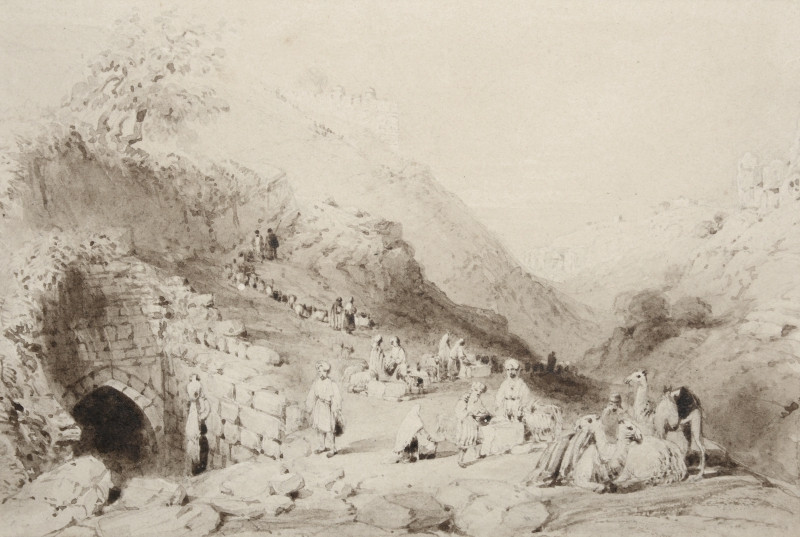
(click image to enlarge)
In the valley appeared one of those fountains, which, from time immemorial, have been the halting-place of caravans, and sometimes the scene of contention and bloodshed. The women of Nazareth were passing to and from the town, with pitchers upon their heads. We stopped to view the group of camels, with their drivers, who were there reposing; and, calling to mind the manners of the most remote ages, we renewed the solicitation of Abraham’s servant unto Rebecca, by the Well of Nahor [Gen. xxiv. 17.]. In the writings of early pilgrims and travellers, this spring is denominated “the fountain of the Virgin Mary;” and certainly if there be a spot throughout the Holy Land, that was undoubtedly honoured by her presence, one may consider this to have been the place; because the situation of a copious spring is not liable to change; and the custom of repairing thither to draw water, has been continued among the female inhabitants of Nazareth, from the earliest period of its history.
(Edward Daniel Clarke, Travels in various Countries of Europe, Asia and Africa, part 2: Greece, Egypt and the Holy Land, London: Cadell and Davies, 1812, Chapter XIII: ‘The Holy Land-Acre to Nazareth’; quoted in Henry Stebbing, The Christian in Palestine, London: George Vertue, 1840, page 46)